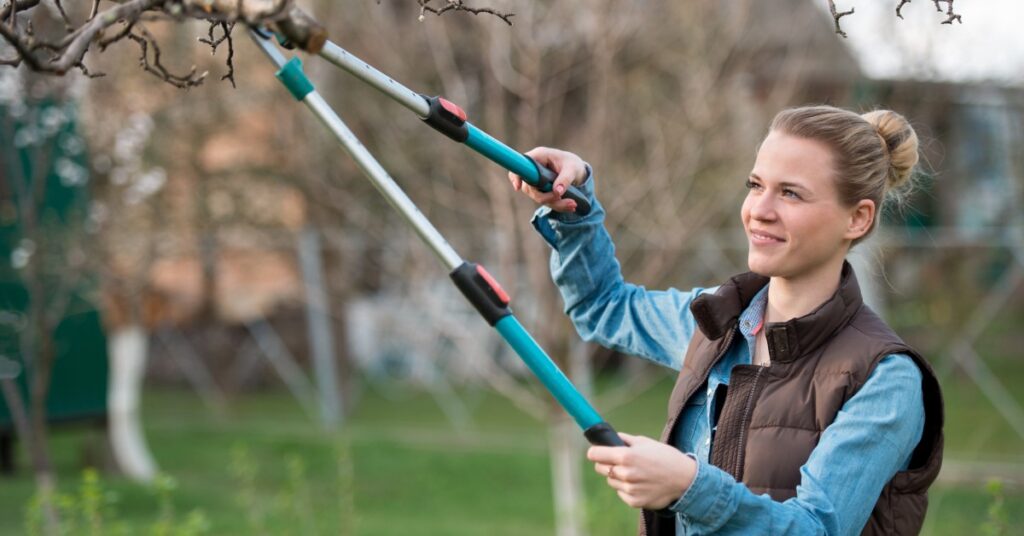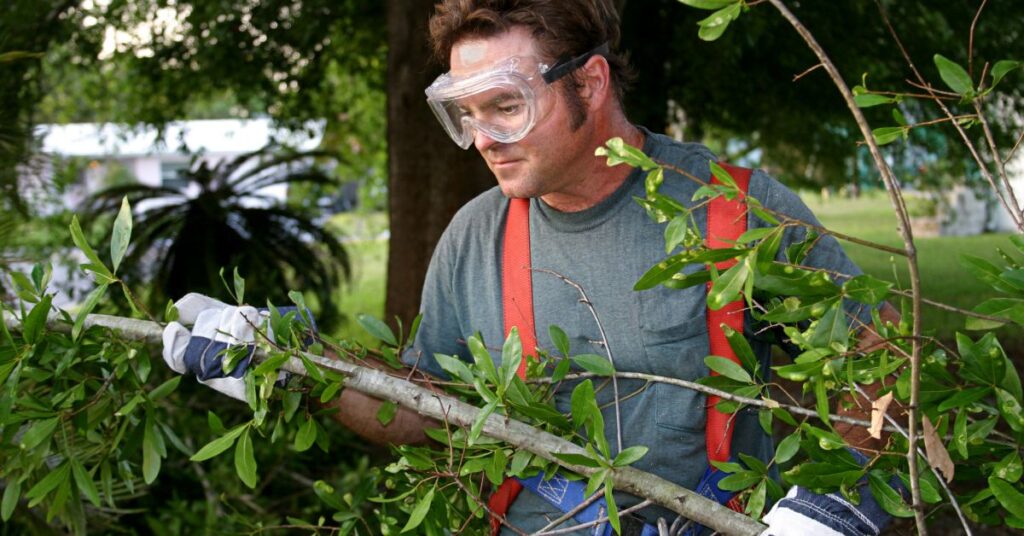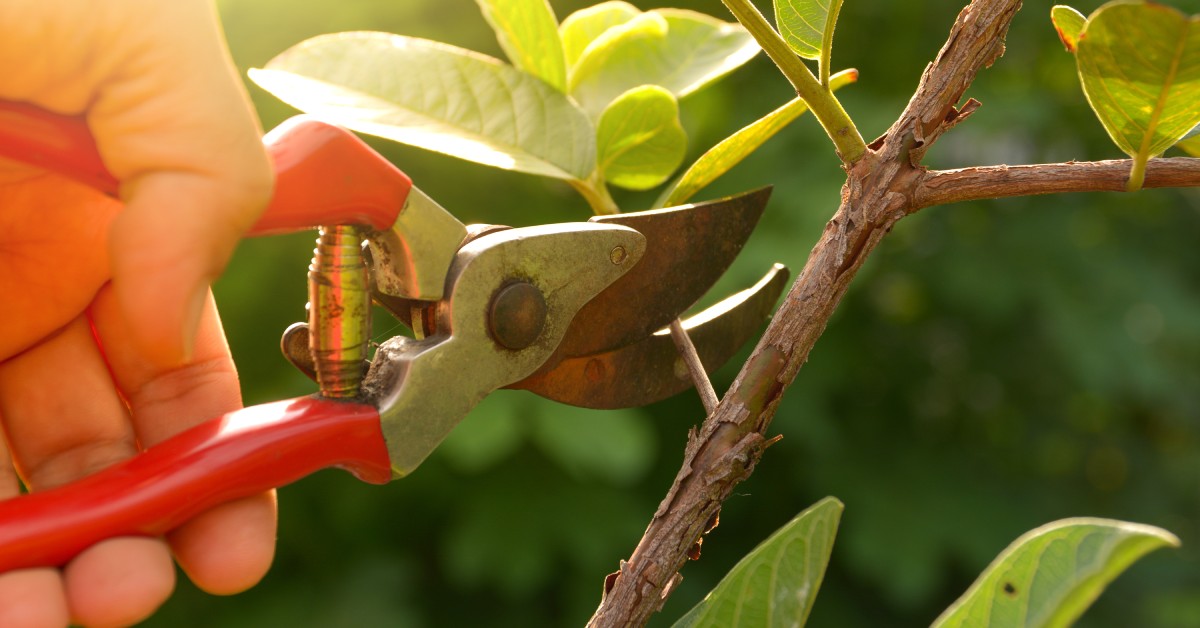As a homeowner, maintaining the health and beauty of your trees is an essential part of property upkeep. Tree pruning and trimming are crucial practices that enhance your landscape’s aesthetic appeal and promote your trees’ overall well-being. However, these tasks require knowledge, skill, and careful consideration to avoid potential damage. We’ll discuss eight key dos and don’ts of tree pruning and trimming.
The Dos of Tree Pruning and Trimming
When it comes to tree care, homeowners should follow several best practices to maintain their trees’ health and beauty. These standards encompass various aspects of pruning and trimming, from timing and technique to tool selection and safety considerations. Adhering to these guidelines ensures that your trees receive the care they need to thrive.
Schedule Regular Inspections
One of the most important aspects of tree care is scheduling regular inspections. By routinely examining your trees, you can identify potential issues early on and address them before they become more severe. These inspections allow you to spot signs of disease, pest infestations, or structural problems that may require immediate attention. Additionally, they help you determine when pruning or trimming is necessary, ensuring that you maintain your trees’ health and appearance throughout the year.
During these inspections, pay close attention to every tree’s overall shape, the condition of its branches, and any signs of decay or damage. Look for dead, diseased, or crossing branches that may need removal.
Prune During Dormancy
Timing is crucial when pruning trees. In most cases, the best time to prune is during the tree’s dormant season, which typically occurs in late winter or early spring before new growth begins. Pruning during dormancy offers several advantages for both the tree and the pruner.
Dormant pruning minimizes stress on the tree, as it is not actively growing and can better allocate resources to heal pruning wounds. Additionally, with leaves absent, it’s easier to see the tree’s structure and identify branches that need removal. This improved visibility allows for more precise and effective pruning. Moreover, pruning during dormancy reduces the risk of disease transmission, as many pathogens are less active during colder months.
Use the Right Tools

Employing the correct tools for tree pruning and trimming is essential for achieving clean cuts and minimizing damage to the tree. Using dull or improper tools can result in jagged cuts that are more susceptible to disease and take longer to heal. Invest in high-quality pruning tools, such as hand pruners, loppers, pruning saws, and pole pruners.
Hand pruners are ideal for small branches up to 3/4 inch in diameter, while loppers can handle branches up to 1 1/2 inches thick. For larger branches, a pruning saw is the tool of choice. Pole pruners help reach high branches without the need for a ladder. Always keep your tools clean and sharp to ensure smooth, clean cuts that promote faster healing and reduce the risk of infection.
Cut Correctly
Proper cutting technique is crucial for the health of your trees. When removing a branch, cut just outside the branch collar, which is the swollen area where the branch connects to the trunk or a larger branch. This area contains specialized cells that help the tree heal after pruning. Cutting too close to the trunk (flush cuts) or leaving long stubs can hinder the tree’s ability to heal properly and may lead to decay.
For larger branches, use the three-cut method to prevent bark tearing. Make an undercut about 12 inches from the trunk, then a top cut slightly further out on the branch. Finally, remove the remaining stub with a clean cut just outside the branch collar.
Consider Tree Health
When pruning and trimming, always consider the tree’s overall health. Remove dead, diseased, or damaged branches first, as these can be entry points for pests and diseases. Thinning out dense areas of the canopy can improve air circulation and light penetration, which may help prevent fungal infections and promote healthy growth.
However, be mindful not to remove too much live tissue at once, as this can stress the tree and impede its ability to produce food through photosynthesis. Always consider the specific needs of your tree species and consult with a professional arborist if you need clarification on the best approach.
The Don’ts of Tree Pruning and Trimming
While understanding the best practices of tree care is crucial, it’s equally important to be aware of practices to avoid. Certain actions can significantly harm your trees, potentially leading to long-term damage or even death. By steering clear of these common mistakes, you can ensure that your pruning and trimming efforts contribute positively to your trees’ health and longevity.
Over-Pruning
One of the most common mistakes homeowners make is over-pruning their trees. While it may be tempting to give your tree a dramatic makeover, excessive pruning can severely stress the tree and compromise its health. Over-pruning removes too much of the tree’s foliage, reducing its ability to produce food through photosynthesis. This can lead to weakened growth, increased susceptibility to pests and diseases, and, in extreme cases, tree death.
Instead of heavy pruning, aim for gradual shaping over several seasons. This approach allows the tree to adapt to changes without experiencing undue stress. If significant pruning is necessary, consider spreading the work over multiple years to minimize the impact on the tree’s health and vitality.
Trimming Too Much at Once
Like over-pruning, trimming too much of a tree at once can have detrimental effects. Removing a large portion of a tree’s canopy in a single session can shock the tree, disrupt its growth patterns, and leave it vulnerable to environmental stressors. This practice can also lead to excessive sprouting as the tree attempts to compensate for the loss of foliage.
When trimming, follow the one-third rule: avoid removing more than one-third of a tree’s live branches in a single growing season. This guideline helps maintain the tree’s natural shape and retains enough foliage to sustain healthy growth.
Neglecting Safety Measures

Tree pruning and trimming can be dangerous activities, especially when working with tall trees or using power tools. Neglecting proper safety measures puts both you and your property at risk. Always prioritize safety when undertaking any tree care tasks.
Wear appropriate personal protective equipment, including safety glasses, gloves, and a hard hat. Use sturdy, well-maintained ladders, and consider hiring a professional for tasks that require climbing or working at heights. Be cautious of power lines and other overhead hazards, and never attempt to prune near electrical wires. If a job seems too challenging or risky, it’s always best to consult a professional arborist with the skills, experience, and equipment to handle complex pruning tasks safely.
By understanding the dos and don’ts of tree trimming and pruning, you can ensure your trees receive the care they need to thrive. If you’re ever unsure about how to care for your trees or need residential tree services, reach out to Watts Tree Service today. Our team of professionals can provide the expertise and care your trees need to thrive.
Last modified: April 25, 2025

